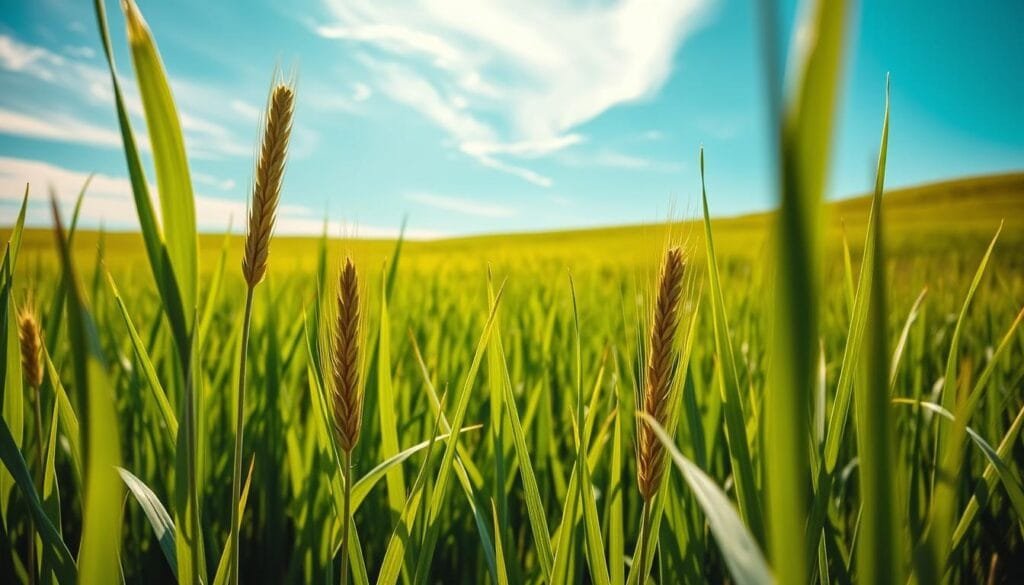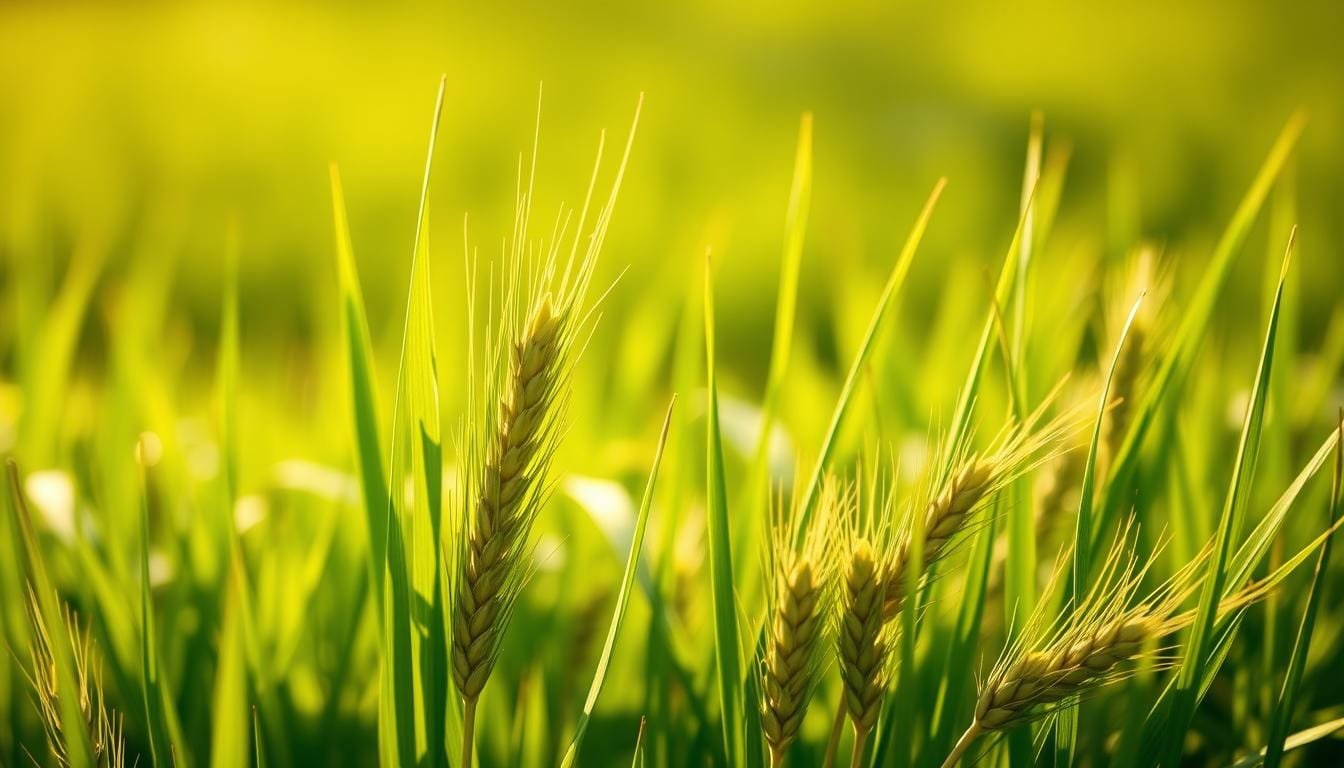Currently Empty: RM0.00
Surprising fact: one tablespoon of dried young leaf can provide about 3 grams of fiber and a dose of vitamins A, C, and K — a small boost that fits a busy Malaysian routine.
Wellness Concept helps people add greens to daily life with friendly, local advice. They note that this young leaf appears in juices, powders, tablets, and gummies alongside kale and spirulina. It’s an easy way to upgrade a diet without major changes.
The team explains forms like fresh blades, barley grass juice, and powder for smoothies or water. They emphasize balance: many enjoy better energy and gentle weight loss support, but more human studies are needed to confirm specific outcomes.
Need quick help? WhatsApp +60123822655. Business hours: Mon–Fri 9:30 am–6:30 pm; Sat–Sun 10 am–5 pm.
Key Takeaways
- Small servings deliver fiber plus vitamins A, C, and K for everyday support.
- Available as fresh blades, juice, and convenient powder for busy days.
- May help energy and weight goals, but human evidence is still evolving.
- Wellness Concept offers local guidance on serving sizes and product choice.
- Mixes well with citrus or tropical juices to soften a mild, slightly bitter taste.
What makes barley grass a supercharged green for everyday health
Young green shoots concentrate plant compounds that support daily wellness routines. Harvested early, barley grass holds high levels of chlorophyll, polyphenols, and flavonoids that add color and plant-based activity to meals.
The powder or juice also brings a practical dose of fiber, especially insoluble fiber, which can slow digestion and influence post-meal responses. This slow-down can help people feel steadier after eating and fit into a balanced approach to health.
It’s not a single miracle ingredient. The perceived benefits come from a mix of compounds plus overall lifestyle choices like sleep, hydration, and movement. Treat this green as a supportive habit rather than a cure-all.
- Easy to use: mixes into smoothies and drinks for quick daily support.
- Familiar plant: barley as a whole is versatile, making this green approachable.
- Practical balance: pairs well with whole foods for routine health benefits.
For tailored advice in Malaysia, readers can contact Wellness Concept on WhatsApp at +60123822655 during business hours.
Quick look at barley grass nutrients: vitamins, minerals, fiber, and antioxidants
This quick guide breaks down what the young green packs — from key vitamins to fiber and protective plant compounds.
Key vitamins
Vitamin A, C, and K — what they do
Vitamin A supports immunity, vision, and normal cell growth. Vitamin C helps skin, collagen formation, and wound healing. Vitamin K is important for blood clotting and healthy bones, which ties into long-term heart and skeletal health.
Magnesium, calcium, potassium, iron
The powder is a helpful source of magnesium and calcium for muscles and bones. Potassium supports heart and nerve function. Iron helps oxygen move through the blood for energy and recovery.
Fiber and antioxidants
Types of fiber and plant compounds
Dried forms deliver nearly 3 grams of fiber per 10 grams, making small teaspoons efficient when mixed into water, smoothies, or yogurt.
The green also contains polyphenols, flavonoids, and chlorophyll that act as antioxidants. While barley grain is known for beta-glucan, this young leaf offers a mix of fibers that round out a high fiber routine.
- Practical tip: a teaspoon or two of powder fits easily into daily meals.
- Forms: commonly found as barley grass juice and barley grass powder for quick use.
- Note: studies on specific outcomes are still growing, so aim for variety and consistent sourcing.
Listicle: Evidence-informed health benefits people associate with barley grass
Clinical and animal research suggest this young leaf may complement everyday habits that target sugar and heart markers. Below are practical, evidence-aligned benefits people often report when they add small servings of powder or juice to meals.

Helps maintain healthy blood sugar levels
Higher daily fiber intake is tied to steadier post-meal responses and better insulin sensitivity. This leaf adds insoluble fiber that helps people manage blood sugar when combined with a balanced diet.
Supports heart health and cholesterol balance
In a small human study, 15 grams of leaf extract for four weeks reduced LDL oxidation, a marker linked to heart risk. Animal trials also showed lower total cholesterol and triglycerides with extract, pointing to supportive effects alongside lifestyle choices.
Weight management support
Low calories and high fiber can increase satiety. Human data link higher fiber with better weight outcomes over time. Animal work with grass juice also suggested reduced body weight on high-fat diets, which is interesting but exploratory.
Promotes gut health and digestive regularity
Consistent fiber-rich servings help maintain regular bowel movements and create a friendlier environment for the microbiome. Small daily portions can add practical grams of fiber toward these goals.
Antioxidant defense against oxidative stress
Polyphenols and flavonoids in the leaf act as antioxidants that may lower oxidative stress from daily life. These effects support overall body resilience when paired with balanced eating and movement.
Realistic note: These benefits are additive. Sustainable results come from regular portions, whole foods, and consistent habits rather than quick fixes.
Barley grass juice vs barley grass powder: which form fits your lifestyle
One format fits a grab-and-go lifestyle while the other helps users dose consistently—choosing the right form depends on how they plan to use it each day.
Convenience and consistency: Ready-to-drink barley grass juice is simple to sip, but bottled shots spoil faster and need refrigeration. In contrast, barley grass powder is easy to measure, store, and pack for work or travel.
Why powder is easy to dose and store
Powder comes with scoop-by-scoop servings that help keep intake steady. It travels well and has a long shelf life when sealed and kept dry. For busy routines in Malaysia, that reliability supports daily habits.
Nutrient density and absorption
Some barley grass powder is more concentrated per scoop than liquid forms. That means smaller volumes can deliver a similar boost. Blending powder into food or water helps absorption and improves adherence. Still, overall diet quality drives the main health effects.
Taste and practical use cases
The flavor is mild and slightly bitter. Mixing with citrus, pineapple, or mango softens the taste in smoothies.
- Quick breakfast: blend powder into a fruit shake.
- Office option: stir a scoop into water for a fast sip.
- Kitchen boost: add to soups or sauces for a subtle green note.
“Choose a format that you will actually use every day.”
Label tips: pick products with transparent ingredient lists and third-party testing. Store powder sealed and dry; refrigerate open liquids to keep flavor and freshness.
How to add barley grass to your diet the tasty way
Start the day with a simple green boost that fits busy Malaysian mornings. Small, repeatable moves help people build a habit without fuss.
Simple smoothie and juice ideas for busy mornings
Quick smoothie: blend 1–2 teaspoons of barley grass powder with banana, berries, and milk or water for a bright breakfast. This simple formula is easy to scale and tastes familiar.
For faster prep, stir a teaspoon into a small glass of citrus juice or coconut water to soften the flavor and keep the routine under a minute.
Creative uses: sprinkle into yogurt, oats, soups, and grain bowls
Whisk a half-teaspoon into yogurt with nuts and seeds, fold a pinch into warm oats, or add a scoop to soups and grain bowls just before serving.
Savoury fans can blend a little into pesto or a green dip for a subtle note without overpowering the dish.
Suggested amounts and timing: starting small and building a habit
Begin with 1 teaspoon daily for a week, then increase as desired. Measuring by teaspoons helps track grams and keeps intake consistent.
Tip: pair servings with water to support hydration and use this green as a helpful source of nutrition while keeping overall diet quality in focus.
barley grass nutrients for specific wellness goals
Small, regular servings can be shaped to support clear goals like steady energy or skin recovery. Practical timing and simple pairings make the habit easier to keep in a busy Malaysian routine.

Energy and daily balance: chlorophyll, B-vitamins, and hydration synergy
Chlorophyll and B-vitamin blends are often used with water first thing to help people feel a light lift without heavy calories.
Minerals such as magnesium and potassium support muscles and fluid balance, which can help sustain energy through the day.
Tip: combine a small scoop of powder with protein or healthy fat for longer-lasting energy.
Skin and recovery: vitamin C and antioxidant support
Vitamin C and plant antioxidants help the body respond to daily oxidative stress from sun and city life.
Pair greens with sleep, sunscreen, and a balanced diet to support skin repair and gentle recovery after activity.
- Timing: try greens in the morning for an energy lift; use later only if it fits a calming evening routine.
- Forms: some choose barley grass juice for a light sip; others prefer a small scoop of powder in a smoothie for satiety.
- Track: note how the body feels for two weeks to find the best serving and timing.
Potential side effects, gluten considerations, and who should be cautious
Understanding who should be careful with green powders can prevent unwanted interactions and discomfort. Some people report nausea, bloating, or gas when they start a new supplement. Begin with a small amount and increase slowly to let the digestive system adjust.
Medication note: products can contain vitamin K, which may affect people taking blood thinners. Anyone on warfarin or similar drugs should keep their vitamin K intake steady and check with a clinician before changing routines.
Kidney disease raises another concern. Certain mineral levels, like potassium, may need monitoring. Discuss the amount and suitability of powder or juice with a healthcare provider if there are kidney issues.
Gluten risk: the leafy product itself is not the grain, but cross-contamination can occur during harvesting or processing. People with celiac disease or gluten sensitivity should look for clear gluten-free certification.
- Start small: test a low serving to watch for mild digestive effects.
- Check labels: scan for added botanicals or allergens in blends.
- Hydrate: drinking water helps ease fiber-related discomfort.
- Choose tested products: pick third-party tested brands since supplements are not regulated like medicines.
| Concern | Who should act | Practical step |
|---|---|---|
| Blood-thinner interaction | People on warfarin or similar drugs | Keep vitamin intake steady; consult a doctor |
| Kidney / mineral levels | Those with kidney disease | Discuss potassium levels with clinician |
| Gluten cross-contamination | Celiac disease or gluten-sensitive people | Choose certified gluten-free products |
| Digestive upset | New users | Start with a small amount and drink water |
“Choose reputable, third-party tested options and report any unusual effects to your healthcare provider.”
Final note: evidence and studies are still evolving. A cautious, informed approach fits most people and helps keep everyday health routines safe and sustainable.
Wellness Concept Malaysia: guidance, hours, and WhatsApp support
Local support makes starting a new green habit easier. Wellness Concept offers friendly, practical guidance to help people choose between juice shots and convenient powder formats. They focus on taste, budget, and how a product fits daily life in Malaysia.
Contact Wellness Concept on WhatsApp: +60123822655
Quick answers: use WhatsApp to ask about serving ideas, water-to-powder ratios, or simple at-home grass juice shots. The team will suggest starter plans that ease beginners into daily greens without strong flavors.
Business hours: Mon–Fri 9:30 am–6:30 pm; Sat–Sun 10 am–5 pm
They are available Monday through Friday, 9:30 am–6:30 pm, and on weekends from 10 am–5 pm. That schedule helps busy workers and families get support when they need it.
- Product help: compare barley grass powder vs grass juice and other products to fit routine and taste.
- Quality queries: ask about third-party testing and how to read labels.
- Practical tips: mixing with local fruits, shaker-friendly powder methods, and office-ready options.
“They aim to make daily greens realistic for real life in Malaysia.”
For more details or to shop and learn starter ideas, visit Wellness Concept’s guide or message them directly on WhatsApp at +60123822655.
| Service | What they offer | How to reach |
|---|---|---|
| Format selection | Help choose juice or powder to match taste and schedule | WhatsApp +60123822655 |
| Quality checks | Info on third-party testing and label reading | Available during business hours |
| Starter plans | Small, easy steps to add greens without overwhelm | Consultation via chat |
| Mixing tips | Recipes for water, fruit, and office-friendly shakes | Quick replies on WhatsApp |
Conclusion
Small, consistent servings—like a teaspoon in water or a smoothie—help make benefits realistic and measurable.
Barley grass is a practical nutrition ally that fits everyday Malaysian life. It provides vitamins and minerals, about 3 g of fiber per 10 g dried, and plant compounds that may help maintain healthy blood sugar levels and support weight goals when paired with whole foods and movement.
Choose between quick juice shots or a handy powder based on taste and routine. Start small, watch how the body responds, and account for medications such as blood thinners due to vitamin K.
For Malaysia-specific suggestions and product help, message Wellness Concept on WhatsApp at +60123822655 during business hours.
FAQ
What are the main benefits of barley grass juice and powder?
They provide a concentrated source of vitamins, minerals, fiber, and antioxidants that many people use to support blood sugar balance, heart health, gut regularity, and overall energy. Powders offer easy dosing and storage, while fresh juice delivers a hydrating, quick nutrient boost.
How much should someone start with when trying powder or juice?
Beginners should start with a small serving — about half the recommended dose on the product label — and increase gradually over one to two weeks to monitor tolerance and avoid digestive upset. Drinking with meals can help reduce any initial discomfort.
Are there differences in nutrient density between juice and powder?
Powders are often more concentrated and shelf-stable, keeping many vitamins and minerals intact. Fresh juice contains live enzymes and is very hydrating but may lose some nutrients quickly after extraction. Both can be useful depending on lifestyle and storage needs.
Can these products help with weight management?
Yes. High fiber content in whole-leaf powders and certain formulations can promote fullness and aid calorie control when paired with a balanced diet and activity. They are not a standalone weight-loss solution but can support healthy habits.
Do these green products contain gluten or affect people with celiac disease?
Pure leaf powder or juice typically contains negligible gluten because it’s harvested before the grain develops. However, cross-contamination can occur during processing. People with celiac disease should choose certified gluten-free brands and check labels carefully.
Who should avoid or use caution with these supplements?
Individuals on blood thinners, those with low blood pressure, pregnant or breastfeeding people, and anyone with autoimmune or thyroid conditions should consult a healthcare provider before use. Allergies or medication interactions warrant professional advice.
Are there any common side effects to expect?
Mild digestive changes like gas or loose stools can occur when first introducing green powders or juice. Starting with smaller doses and increasing slowly usually reduces symptoms. Serious reactions are rare but seek medical help if severe or persistent problems arise.
How can someone use powder or juice in everyday meals?
Powders mix easily into smoothies, water, yogurt, oats, or soups. Juice works well in morning blends and vegetable mixes. Mixing with fruit or nut milk masks strong flavors and makes daily use more enjoyable.
What should people look for when choosing a product?
Look for transparent labeling, third-party testing, and minimal added sugars or fillers. Organic sourcing, clear ingredient lists, and certifications like gluten-free help ensure quality and safety.
Can these supplements improve skin and recovery?
The combination of vitamin C, antioxidants, and select minerals can support skin repair and recovery by reducing oxidative stress and aiding collagen production. Results vary and are best when paired with a balanced diet and adequate sleep.
How does Wellness Concept Malaysia support customers interested in these products?
Wellness Concept provides product guidance and customer support via WhatsApp at +60123822655. They offer hours for inquiries: Monday–Friday 9:30 am–6:30 pm and Saturday–Sunday 10 am–5 pm.
Are there proven studies supporting these health claims?
Several clinical and observational studies suggest benefits for blood sugar regulation, antioxidant protection, and gut health, but results can vary by formulation and dose. Consumers should review research and consult professionals for personalized recommendations.



